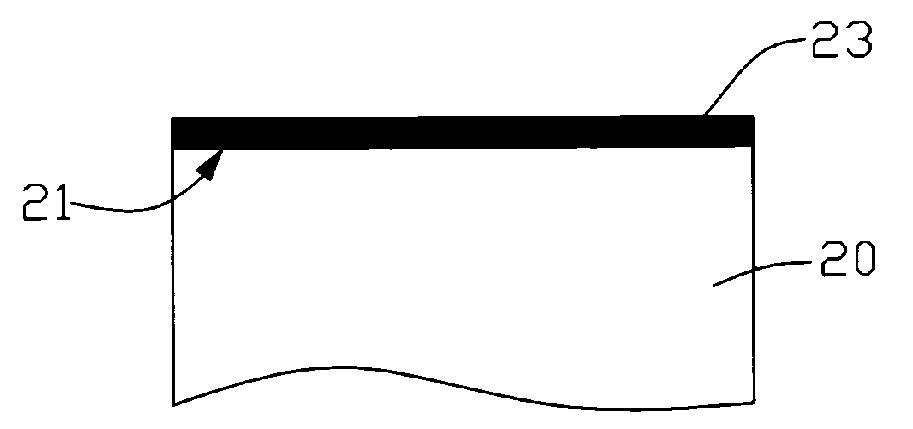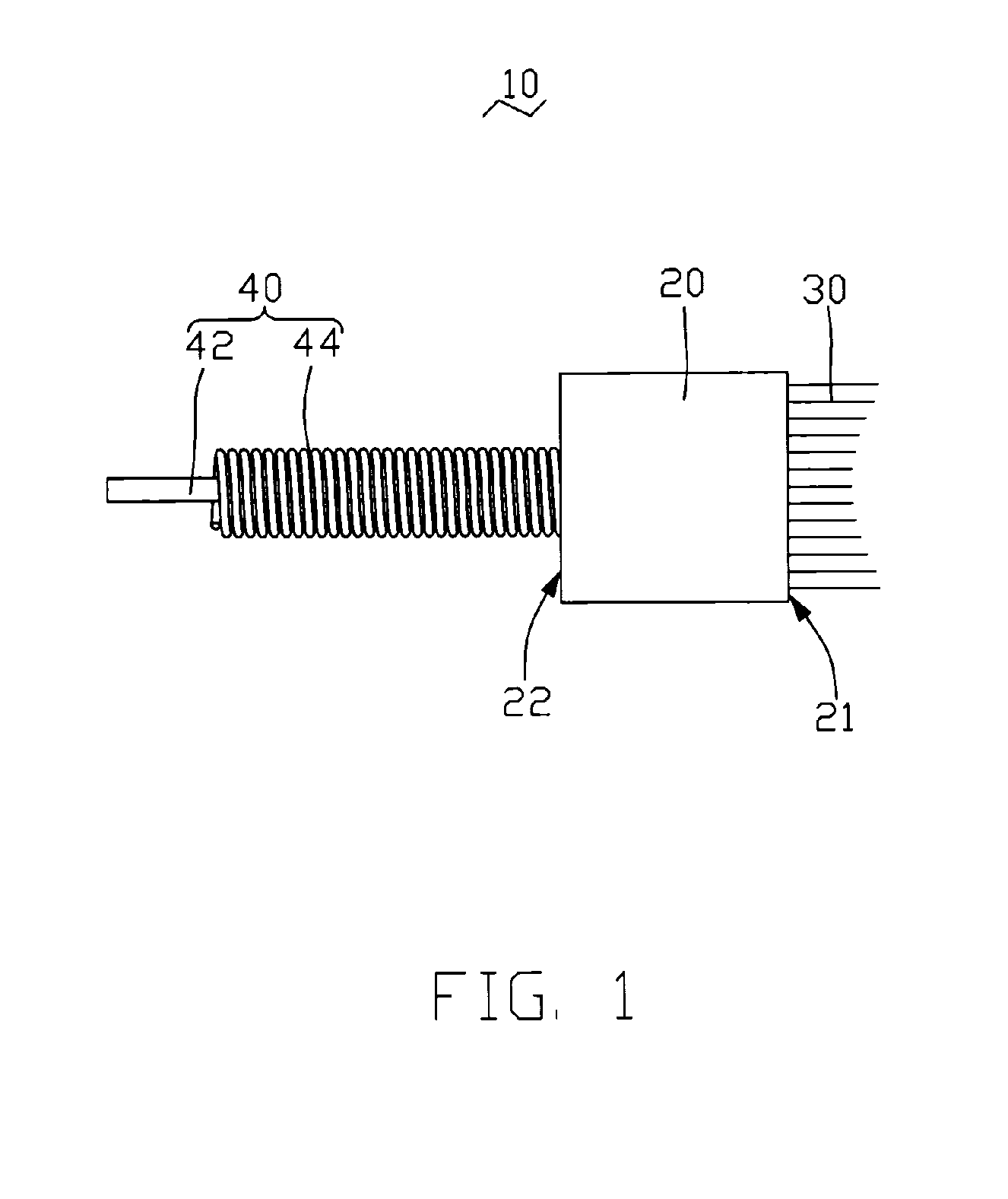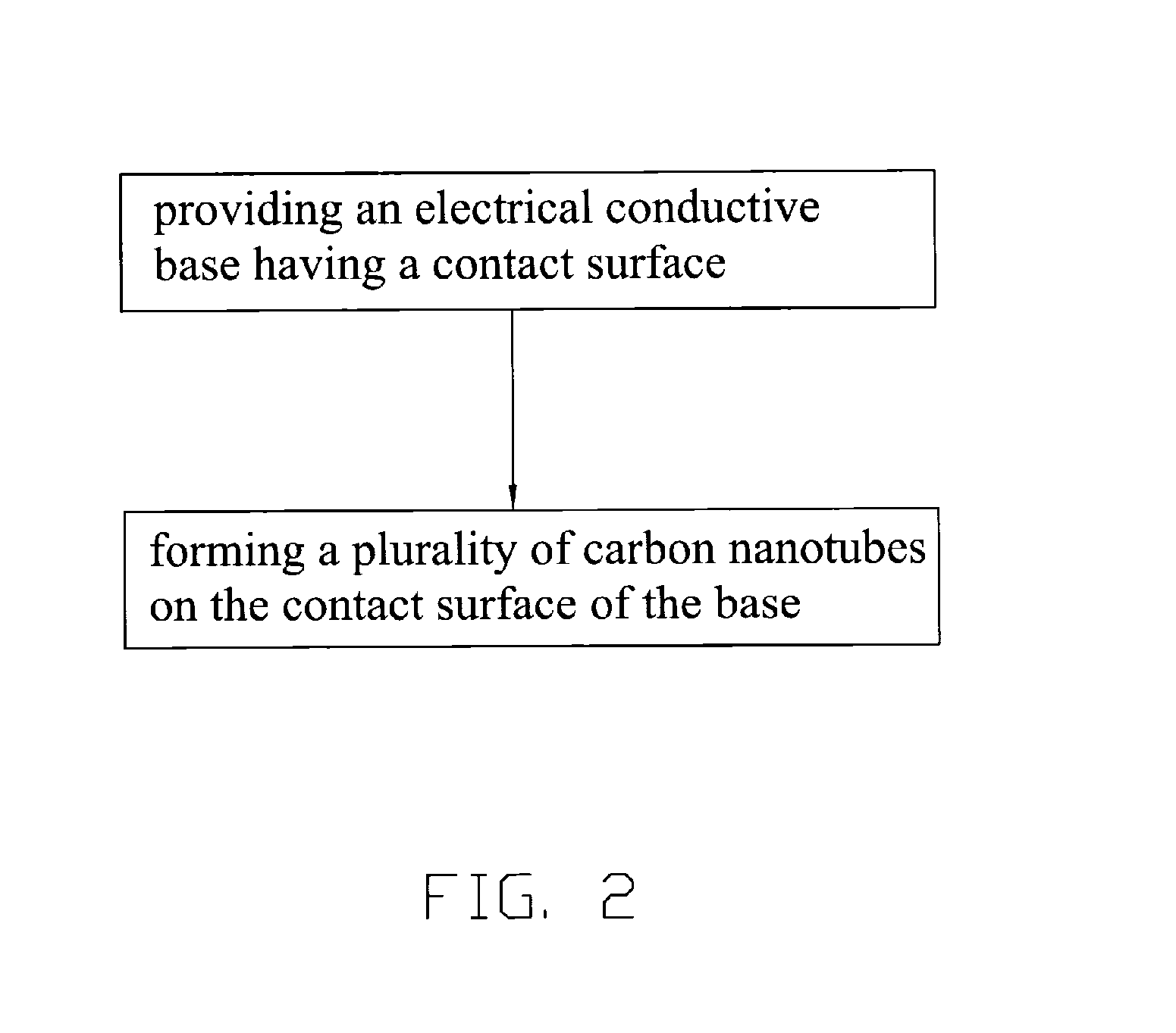Electrical brush and method for making the same
- Summary
- Abstract
- Description
- Claims
- Application Information
AI Technical Summary
Benefits of technology
Problems solved by technology
Method used
Image
Examples
Embodiment Construction
[0015]Embodiments of the present electrical brush will now be described in detail below and with reference to the drawings.
[0016]FIG. 1 illustrates an electrical brush 10 in accordance with a preferred embodiment. The electrical brush 10 includes an electrically conductive base 20, a plurality of carbon nanotubes 30, and an elastic connecting member 40. The base 20 has a contact surface 21 and a conductive surface 22 opposite to the contact surface 21. The carbon nanotubes 30 are formed on the contact surface 21 of the base 20. The elastic connecting member 40 is configured for elastically connecting with the conductive surface 22 of the base 20.
[0017]The base 20 is advantageously made of an electrically conductive material, for example, copper, gold, silver, nickel, or their combinations. The contact surface 21 of the base 20 may be a concave curved surface, for example, for fitting with a rotary member with a convex curved surface.
[0018]The carbon nanotubes 30 may be selected from...
PUM
 Login to View More
Login to View More Abstract
Description
Claims
Application Information
 Login to View More
Login to View More - R&D
- Intellectual Property
- Life Sciences
- Materials
- Tech Scout
- Unparalleled Data Quality
- Higher Quality Content
- 60% Fewer Hallucinations
Browse by: Latest US Patents, China's latest patents, Technical Efficacy Thesaurus, Application Domain, Technology Topic, Popular Technical Reports.
© 2025 PatSnap. All rights reserved.Legal|Privacy policy|Modern Slavery Act Transparency Statement|Sitemap|About US| Contact US: help@patsnap.com



